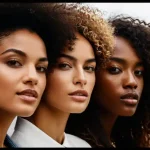UK Women’s Fashion as a Mirror of Societal Change
Fashion has long served as a vivid reflection of societal values and prevailing attitudes. In the UK, women’s fashion closely tracks cultural shifts, offering insights into broader social change. As society evolves, so do dress codes, revealing what is acceptable, aspirational, or rebellious in each era.
One key reason UK women’s fashion adapts is its role as a form of identity and expression. Changes in political, economic, and gender dynamics influence styles, fabrics, and silhouettes women choose to wear. For example, during periods of social upheaval, such as wartime or feminist movements, fashion often becomes both a symbol of resilience and a means of challenging norms.
Also to read : How Can UK Women’s Fashion Incorporate Sustainability Trends?
The evolution of women’s dress codes in the UK underscores this relationship. From restrictive corsets of the Victorian era to the liberating cuts of the 1960s and the rise of power dressing in the 1980s, clothing choices reveal changing attitudes toward female agency and freedom. Each shift in UK women’s fashion documents the ongoing dialogue between tradition and progress, highlighting how dress not only reflects but also shapes social change.
Historical Milestones: Fashion Responding to Cultural and Political Movements
Fashion has long mirrored significant shifts in society, especially in women’s fashion history UK. The suffrage movement of the early 20th century dramatically transformed women’s clothing and public appearance. Women began favoring tailored, practical garments over restrictive corsets, symbolizing their push for equality and autonomy. Clothing became a tool for expressing political beliefs, with styles reflecting a move toward independence and empowerment.
Also to read : What Are the Key Differences in UK Women’s Fashion Compared to Global Trends?
The 1960s fashion surge exemplifies this trend further. As feminist ideologies gained momentum, women’s style evolved to embrace boldness and freedom. Mini skirts, flowing dresses, and unstructured tailoring became emblematic of liberation, signaling defiance against traditional norms. This period’s style was closely tied to the broader cultural upheaval, including civil rights activism and anti-war protests.
Political changes consistently influenced women’s style choices. Whether through fabric, cuts, or colors, these adaptations highlighted women’s evolving social roles. This cyclical relationship between politics and fashion emphasizes how attire transcends mere aesthetics, serving as a visual language for cultural identity and resistance. Understanding this history reveals how today’s women’s fashion still draws from these breakthroughs, continuing to reflect ongoing societal dialogues.
Modern Trends: Diversity and Inclusion in Contemporary UK Women’s Fashion
Diversity and inclusion are defining elements of modern UK fashion trends, transforming both runway presentations and everyday street style. Increasingly, designers embrace a wide range of ethnic backgrounds, body types, and gender expressions, making fashion more reflective of the UK’s multicultural society. This shift ensures that women from all communities see themselves represented in fashion narratives.
Several brands have taken active roles in promoting inclusion. Designers incorporate cultural motifs and traditional textiles with a modern twist, celebrating heritage while pushing creative boundaries. This approach not only honors identity but also enriches the creativity visible on catwalks and urban fashion scenes.
The rise of multicultural influences is evident in fashion weeks and retail collections. For instance, garments infused with South Asian embroidery, African prints, and Caribbean colors showcase community voices through style. Such visibility encourages social cohesion and broadens the definition of beauty beyond conventional norms. As diverse representation grows, it cultivates a fashion landscape where every woman feels valued and seen, inspiring confidence and cultural pride.
The Role of Technology and Social Media in Shaping Fashion Attitudes
Technology and fashion have merged into an inseparable force shaping UK women’s fashion digital era. Social media influence is a chief driver, as platforms like Instagram and TikTok enable real-time engagement with trends. Influencers quickly amplify styles, making fashion more accessible and dynamic than ever before. This immediacy allows UK women to respond to trends instantly while also setting their own.
Technological advances in textiles bring innovation to the fashion industry, offering sustainable and functional fabrics that appeal to evolving consumer values. Smart fabrics, moisture-wicking materials, and eco-friendly textiles demonstrate how technology and fashion intersect beyond aesthetics, influencing cultural relevance and everyday wear.
Social media also acts as a global lens through which fashion reacts to cultural shifts. Viral trends spark conversations around identity, inclusivity, and sustainability, all facilitated by digital platforms. This accessibility means UK women’s fashion digital era is not only about style but also about expressing values shaped by global dialogues, proving technology’s pivotal role in shaping modern fashion attitudes.
Influential Figures and Design Houses Driving Change
Exploring the forces shaping contemporary style
The fashion designers UK landscape is rich with trendsetters who challenge and expand cultural boundaries. These creators do more than craft clothing; they engage deeply with societal issues, reflecting and influencing social narratives through their collections. Their work often highlights themes like identity, equality, and sustainability, positioning fashion as a powerful medium for social commentary.
Celebrities and activists increasingly play a pivotal role in altering fashion narratives. By collaborating with designers or adopting bold styles publicly, they amplify messages about diversity and social justice. Their visibility ensures that the cultural impact of designers reaches broader audiences, reinforcing the idea that fashion is intertwined with activism.
Prominent fashion houses in the UK harness current events to provoke thought and dialogue. Collections frequently reference political climates or environmental concerns, serving as wearable statements that encourage reflection. This approach positions fashion as not only an industry for aesthetics but also a platform for cultural critique and innovation.
Analysis: How Fashion Reflects and Drives Feminism and Social Progress
Fashion has long been a powerful vehicle for feminism and fashion UK, embodying both empowerment and resistance. Clothing choices allow individuals to express gender identity and challenge traditional norms. For example, the adoption of trousers by women in the early 20th century signified a break from restrictive female roles. Over time, designers and brands increasingly incorporated messages promoting gender equality fashion into their collections.
Notable fashion moments have visibly symbolised feminist ideals. Collections featuring unisex clothing or campaigns spotlighting women’s rights have made bold statements. These moments are not merely aesthetic; they actively push social boundaries, contributing to ongoing conversations about women’s roles and rights. This intertwining of social progress fashion and activism fosters greater awareness and inclusivity in society.
Public reception to feminist fashion often ranges from enthusiastic support to pinpointed critique. Some applaud the challenge to outdated standards, while others argue that commercialising feminism risks diluting its message. Nevertheless, the sustained presence of feminist themes in fashion highlights its role as a catalyst for social change and a mirror reflecting evolving attitudes toward gender equality.



